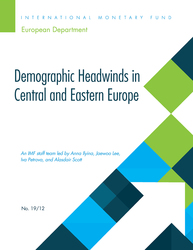
Demographic Headwinds in Central and Eastern Europe
Populations of CESEE countries are expected to have negative net birth rates and outward migration, this will effect growth, living standards and other factors
Volume/Issue:
Volume 2019
Issue 011
Publication date: July 2019
ISBN: 9781498319768
$20.00
Add to Cart by clicking price of the language and format you'd like to purchase
Available Languages and Formats
| English |
Topics covered in this book
This title contains information about the following subjects.
Click on a subject if you would like to see other titles with the same subjects.
Labor , Demography , DPPP , DP , CESEE country , labor market , public spending , current account , workforce aging , labor force , retirement age , IMF staff calculation , CESEE economy , CESEE workforce , baseline labor force scenario , EU country , per capita income , CESEE population , physical capital , workforce cohort , Aging , Labor force , Total factor productivity , Western Europe , Europe , Eastern Europe , Baltics , Global
Summary
The populations of Central and Eastern European (CESEE) countries—with the exception of Turkey—are expected to decrease significantly over the next 30 years, driven by low or negative net birth rates and outward migration. These changes will have significant implications for growth, living standards and fiscal sustainability.
Copyright © 2010 - 2025
Powered by:
AIDC



